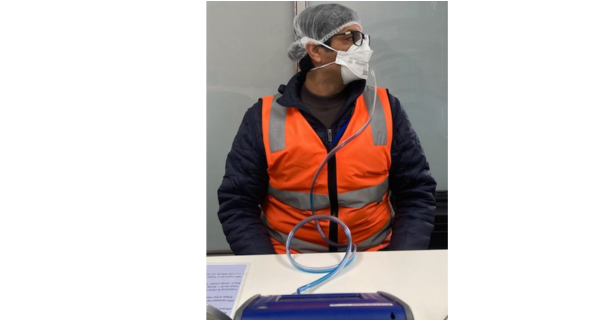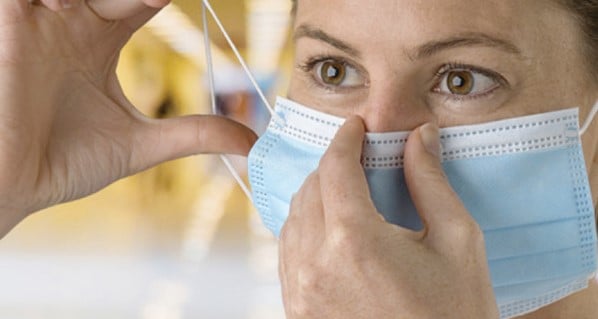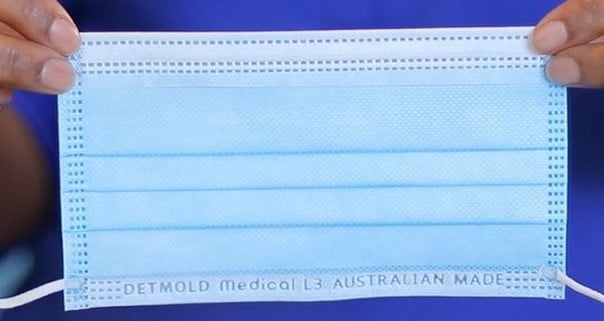What is Respirator Fit Testing?
Respirator fit testing is designed to detect air leaks around the seal of the respirator and the wearer’s face. If the respirator doesn’t fit correctly, it won’t provide the intended level of protection and will leave the wearer exposed to contaminated air. This could result in immediate or long-term health effects.
Why is Respirator Fit Testing Important?
Respirator fit testing is essential for ensuring adequate protection. Fit testing is used to check that a respirator forms an effective seal on an individual's face, minimising the potential for contaminated air to pass through gaps or leaks. A proper fit is crucial for the respirator to perform its intended function of protecting the wearer from hazardous airborne contaminants.
Fit testing is also a requirement under the Australian New Zealand Standard AS/NZS1715:2009 for employees wearing tight-fitting respirators, including disposable and reusable respirators.
Types of Respirator Fit Tests
People’s faces differ drastically in terms of both shape and size, which is why there are different styles and sizes of respirators. Respirator fit testing is to be carried out by a competent person and is used to identify a suitable respirator for an individual. A competent person could be an occupational hygienist, manufacturer, supplier, consultant, or a trained in-house person. Workers must pass a respirator fit test before wearing a tight-fitting respirator on the job for the first time. It is worth noting that a fit test should not be confused with fit checking. Fit checking is the process of ensuring that the respirator is properly positioned on the wearer’s face to create a good seal. A fit check is a quick check that should be carried out each time the wearer dons their respirator.
There are two fit test methods that meet the Australian New Zealand Standard AS/NZS1715, quantitative fit testing and qualitative fit testing. Here’s how these two approaches work.
Quantitative Fit Test (QNFT)
The quantitative method is the most reliable method of fit testing, making it the gold standard fit test. The quantitative fit test provides a numerical measure of how well the respirator fits against the wearer’s face, known as a ‘fit factor’. This method is suitable for tight-fitting respirators, including single-use and re-usable half-face respirators, full-face respirators and powered air-purifying respirators (PARPs). Quantitative fit testing procedures use specialised equipment, like a laboratory test chamber or a portable fit testing device, to conduct the test.
The most common technique is known as the ambient aerosol condensation nuclei counter (CNC) method. It uses a particle-counting device to measure the concentration of particles both inside and outside the respirator while the wearer performs various exercises. By comparing the particle concentrations, an objective numerical fit factor is calculated, which determines the respirator's fit.
Qualitative Fit Test (QLFT)
The qualitative method is used for disposable respirators. This method relies on the wearer’s sense of taste or smell to detect leakage through the seal. It involves the use of a test substance, usually a bitter or sweet aerosol, which is sprayed into a test hood or enclosure around the individual's head while wearing the respirator. The individual then performs a series of movements, such as talking, breathing or turning their head, to assess if they can detect the test agent's taste or smell.
This test results in a simple pass or fail outcome. Because the test relies on the wearer’s senses, it’s entirely subjective and can result in false passes, which could leave the wearer at risk of exposure.
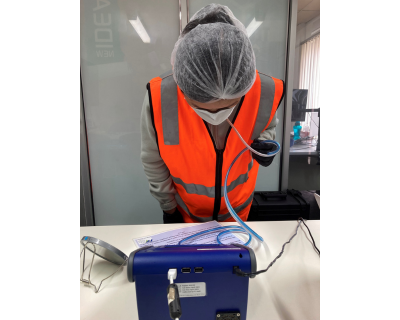
How to Perform a Respirator Fit Test
According to Australian standards, fit testers don't have to be certified, but it's recommended that they're familiar with how to conduct a fit test, recognise invalid results and maintain fit testing equipment. With that said, you can engage accredited fit testers to conduct fit testing on-site or you can even enrol staff in an accreditation program run by the Australian Institute of Occupational Hygienists (AIOH) that conducts fit testing training.
Here's how the respirator fit test process usually works for both qualitative testing and quantitative methods.
- Select the fit testing method: The first step is to choose between qualitative fit testing or quantitative testing based on the type of respirator and the relevant regulations. Full-face respirators can only be tested using quantitative fit testing.
- Set up the testing area: Once the fit testing process has been decided, the fit tester should set up a dedicated fit testing area that's well-ventilated and free from any airborne contaminants that could interfere with the fit test results.
- Provide instructions and a demonstration: Before being fit tested, the fit tester should explain the process to the individual being tested. That includes showing them how to correctly don and adjust the respirator to make it seal properly.
- Perform a negative pressure check: Before the fit test, the individual should perform a quick fit check by blocking the intake valves and breathing in. If the respirator creates a good face seal, no air should be able to enter.
- Conduct the fit test: Before getting started it's important that the individual being fit tested are clean shaven, as facial hair can interfere with the seal. The following steps depend on the fit testing method:
- Qualitative Fit Testing: The individual wears the respirator and a test hood or enclosure. A test agent, such as a bitter or sweet aerosol, is introduced into the hood. The individual performs a number of movements, like breathing, talking or turning their head, to determine if they can detect the taste or smell of the test agent. To pass a qualitative fit test, the individual shouldn't be able to taste or smell the agent.
- Quantitative Fit Testing: A quantitative fit test uses specialist fit testing equipment, like an ambient aerosol condensation nuclei counter (CNC). The individual being fit tested wears the respirator while the equipment measures the concentration of particles both inside and outside the respirator. The fit factor is calculated based on the particle concentrations. A minimum fit factor of 100 is needed to pass for disposable half-face respirators.
- Provide fit test reports: Once the fit test has been completed, the individual being fit tested will be provided with a report of the results, including the type of respirator, fit testing method, fit factor (for quantitative fit testing) and any observations or notes regarding the fit. If the respirator didn't pass the fit test, retesting may be required with a different type or size of respirator to ensure the wearer is adequately protected.
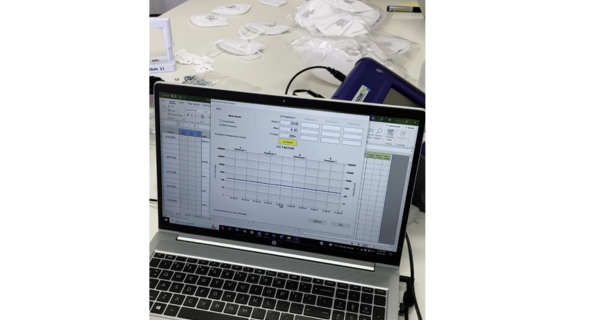
The standards state that all fit testing must be carried out by a competent person such as occupational hygienist, manufacturer, supplier or consultant or a trained in-house person.


